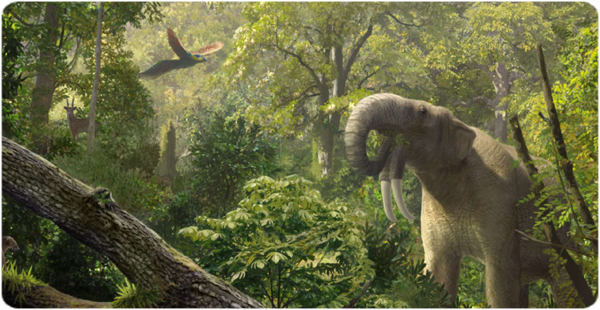 El macrojaciment de Can Mata ubicat als Hostalets de Pierola (Anoia) ha proporcionat més de 72.000 fòssils de vertebrats en les darreres dècades i és una referència a nivell mundial per estudiar les faunes del Miocè. Una nova recerca ha permès datar la localitat clàssica de Can Mata 1 en 11,1 milions d’anys d’antiguitat, posterior al trànsit Aragonià/Vallesià, on es va trobar una dent de primat a mitjans del segle passat. La investigació ha estat publicada a la revista Journal of Human Evolution.
El macrojaciment de Can Mata ubicat als Hostalets de Pierola (Anoia) ha proporcionat més de 72.000 fòssils de vertebrats en les darreres dècades i és una referència a nivell mundial per estudiar les faunes del Miocè. Una nova recerca ha permès datar la localitat clàssica de Can Mata 1 en 11,1 milions d’anys d’antiguitat, posterior al trànsit Aragonià/Vallesià, on es va trobar una dent de primat a mitjans del segle passat. La investigació ha estat publicada a la revista Journal of Human Evolution.

A PNAS study led by the Institut Català de Paleontologia Miquel Crusafont (ICP) analyzed the kinship between two Miocene great apes (Hispanopithecus and Rudapithecus) based on the morphology of their inner ear semicircular canals. This anatomical structure has revealed to be very informative in reconstructing phylogenetic relationships between fossil primate species. The results are in accordance with the distinction of these taxa at a generic level and reinforce their allocation in the Hominidae. Furthermore, the similarities in semicircular canal morphology with extant chimpanzees and bonobos suggest that the latter possibly retained the ancestral condition, while orangutans appear to have derived independently.

Un estudi a PNAS liderat per l'Institut Català de Paleontologia Miquel Crusafont (ICP) analitza la relació de parentiu entre dos grans primats antropomorfs del Miocè (Hispanopithecus i Rudapithecus) a partir de la morfologia dels canals semicirculars de la seva orella interna. Aquesta estructura anatòmica es molt informativa de cara a reconstruir el parentiu entre les espècies de primats fòssils i confirma que els dos gèneres d'homínids són diferents, i molt similars als ximpanzés i als bonobos actuals. Aquests haurien conservat en gran mesura la forma ancestral mentre que els orangutans s'haurien allunyat d'ella més que els altres antropomorfs.

The researchers Kelsey Pugh (City University of New York) and Miyuki Kagaya (Hiroshima University) are visiting the ICP this week to study several fossils from the Institute's collection. Pugh works on the systematics of the Miocene hominoids while Kagaya studies the functional morphology of the upper limbs of apes. Some of the specimens that have planned to study are the post-cranial remains of Pierolapithecus catalaunicus (named “Pau”) and Hispanopithecus laietanus (“Jordi”).
Five species of flying squirrels that coexisted in the Vallès-Penedès basin during the Miocene, about 9.7 million years ago, have been described in the site known as Can Llobateres (in Sabadell, Catalonia). The finding, headed by Isaac Casanovas, researcher at the Institut Català de Paleontologia Miquel Crusafont , has been published in an special issue devoted to the Dutch paleontologist Albert J. Van der Meulen in the scientific journal Palaeobiodiversity and Palaeoenvironments.







